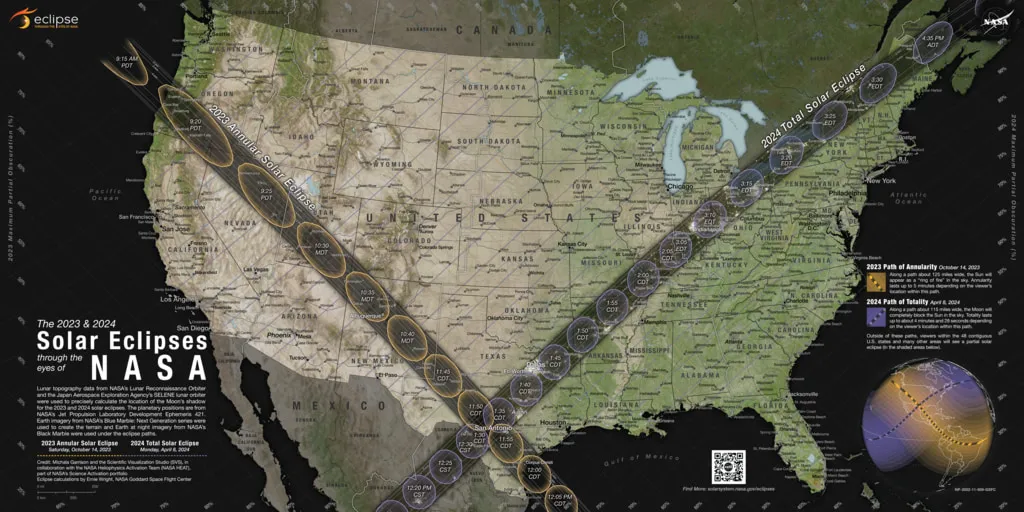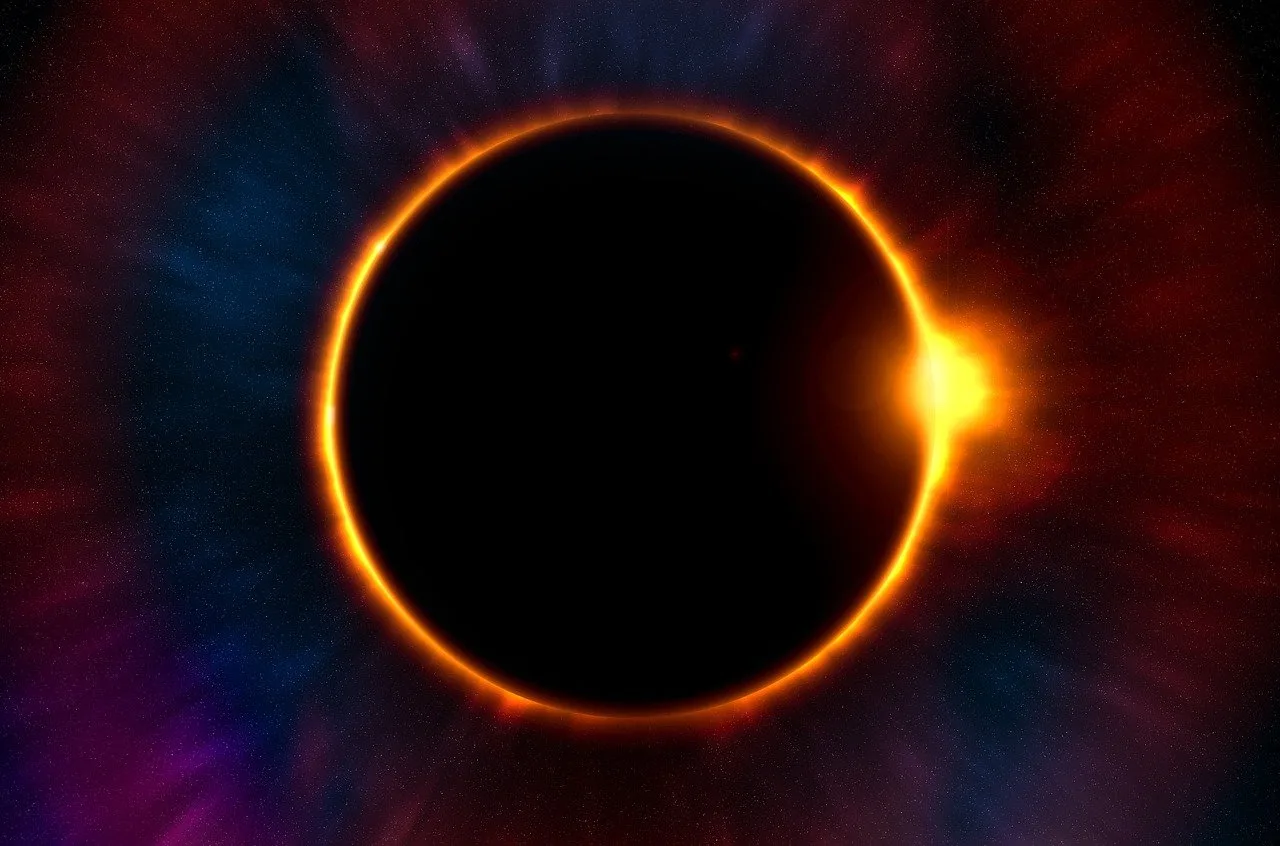Solar Eclipse-On Saturday, October 14th, the Moon will pass directly between the Earth and the Sun, casting its shadow upon our planet.
For those fortunate enough to be along the path of the shadow, primarily in the western United States, Mexico, and parts of Central and South America, a spectacular event awaits: a celestial “Ring of Fire” solar eclipse.
This weekend’s path is of particular significance in indigenous cultures, notably within the Navajo Nation and Four Corners region. The people of the Navajo Nation, known as the Diné, avoid traveling, watching the eclipse, or letting its light shine upon them as a mark of respect for their cultural traditions. Many Native American parks and prominent landmarks, including some portions of the Grand Canyon, will be closed to visitors on Saturday to honor these cultural traditions.
In contrast to a total solar eclipse, where the Moon completely obscures the Sun, during an annular eclipse, a ring of the Sun’s brilliant corona still gleams around the edges of the Moon’s silhouette.
This is because an annular eclipse occurs when the Moon is slightly farther from Earth in its orbit. The result is that the Moon appears smaller than the Sun, creating a radiant “ring of fire.” These events are relatively rare, with only around 12 annular eclipses happening worldwide in a decade.

According to NASA, the eclipse will be visible in parts of the United States, including Oregon, California, Idaho, Nevada, Utah, New Mexico, Texas, Colorado, and Arizona, weather permitting.
The eclipse is set to begin at 9:13 AM local time in Oregon and will conclude at 12:03 PM Central Daylight Time in Texas, just before crossing into Mexico, Belize, Honduras, Nicaragua, and beyond, into Brazil.
For specifics on when the eclipse will pass through your region, you can refer to the provided map. Only individuals located within the eclipse’s path will witness the full “ring of fire.”

Alternatively, you can visit NASA’s Eclipse website, where an interactive tool allows you to click anywhere along the eclipse path to obtain precise timing information for when the spectacle begins and ends at your exact location.
For those who cannot make it to the eclipse path, NASA has got you covered. You can watch it below.
And if you’ve read this far and are still pondering – ‘Why and how do solar eclipses happen?’ and ‘When is the next one?’ and ‘How can I watch it without burning my pupils?’ – we’ve got you covered:
Here’s why solar eclipses happen:
The answer is quite simple: Sometimes, the Moon gets in the way of the Sun in the sky. But it’s more complex than that. Creating a shadow requires meeting three cosmic conditions:
1) It has to be a New Moon
A part of the Moon is always illuminated by the Sun, but that illuminated part is not always facing Earth. This is how we get the Moon’s phases. For a solar eclipse to happen, it needs to be in the ‘New Moon’ phase.
During a New Moon, the dark part of the Moon faces directly towards Earth.
2) The Moon has to cross Earth’s orbital plane
If solar eclipses need the dark part of the Moon to be facing Earth, why don’t we have one every New Moon? This is because the Moon’s orbital plane doesn’t perfectly align with Earth’s. It’s tilted by about 5 degrees (no one’s entirely sure why it’s a bit slanted, but it might have something to do with a colossal collision with Earth). This means that, most of the time during New Moons, the shadow misses Earth.
But there are two points in the Moon’s orbit where its shadow can hit Earth. These are called nodes.
For a total eclipse to occur, the Moon has to be at one of these nodes or very close to it.
3) The Moon has to be far enough from Earth
You might recall this from middle school science: Earth’s orbit around the Sun isn’t a perfect circle. It’s an ellipse.
There’s a point in the ellipse where Earth is closest to the Sun and a point where it’s farthest away. For a total eclipse to happen, the Moon has to be at or near the point where it’s farthest from Earth.
If the eclipse happens when the Moon is closer, we get a partial eclipse.
So, there you have it! Solar eclipses aren’t as common as you might think, and their occurrence depends on these three celestial conditions. Remember, if you’re eager to witness one, plan accordingly, and prioritize safety!
Safety Note: If you plan to view the eclipse, please take precautions. Directly observing the Sun can harm your eyes. NASA advises that “looking directly at the Sun is never safe.”
Even the intense light of a partially-eclipsed Sun can damage your retina and result in “permanent scotoma, or ‘blind spot’ in your central vision.”
The safest ways to observe a solar eclipse are either indirectly, such as projecting the eclipse onto a screen, or by viewing it through specially designed filters.
If you miss this eclipse due to unfavorable weather or are unable to be in the path of the shadow, don’t fret. Another eclipse is on the horizon in 2024.
On April 8, 2024, a total solar eclipse will take place, where the Moon will entirely block the Sun, creating a spectacular celestial sight. This event is set to pass through a significant portion of the eastern United States. Mark your calendars!


Hello! Do you know if they make any plugins to help with Search
Engine Optimization? I’m trying to get my site to rank for
some targeted keywords but I’m not seeing very good
success. If you know of any please share. Thank you! You can read similar blog here: Najlepsze escape roomy